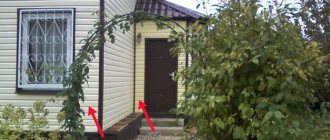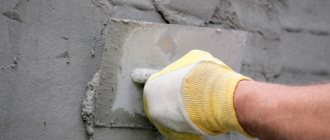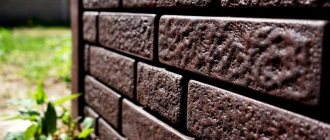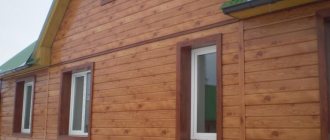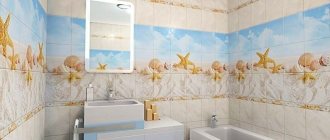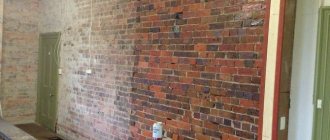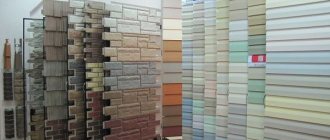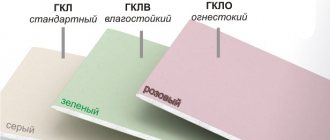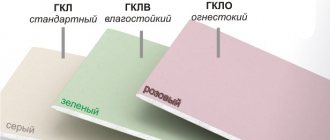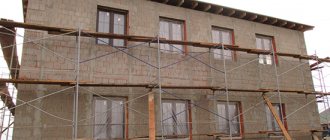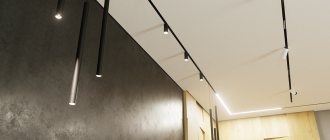Metal lading is a fairly common type of finishing of the exteriors of modern houses.
Metal siding or metal siding is one of the most desirable finishing materials in the world of construction. Long, lightweight panels 12-30 cm wide and 1.5-6 m long differ in two types of surface: profiled and smooth.
The word "siding" is English and means "outer cladding." Exterior finishing with siding panels is a great way to not only protect the walls of a building, but also give it an original look.
A variety of types and colors of metal siding allows you to choose the optimal material for almost any building
Style and conciseness are the distinctive features of metal siding
Considering how rich the modern choice of metal siding is in color, texture and shape, this material is rightfully the best among its analogues.
Types of materials
Siding is usually called structures made of PVC or steel, fixed to each other using special locking mechanisms. Plastic products in stores are presented in several versions:
- ordinary, unstable to mechanical stress;
- reinforced, made to look like stone;
- steel.
Steel panels have increased strength and are produced in the form of a formed sheet, which is suitable not only for external cladding, but also for interior finishing of non-residential premises. Although the price of metal siding is much higher, this is compensated by its long service life, but it is not practical to use it for interior decoration.
Plastic panels are characterized by increased moisture resistance and are not subject to fire, which has ensured their widespread use in the decoration of corridors, kitchens and bathrooms. They are easy to care for and are resistant to fading, dampness and detergents. The choice of design options in stores is not so wide, but every buyer has the opportunity to purchase custom-made siding. Although its production will take some time, but after waiting, the buyer will be able to get an original design.
MDF panels and lining do not tolerate dampness, so it is not advisable to use them for finishing basements, toilets and bathrooms. You can make wooden lining more resistant to moisture by treating it with special compounds, but it is worth remembering that this will be an additional cost, and you can always purchase material that is more suitable for a room with a similar regime.
When choosing options for wall cladding, you should take into account their features, cost and the amount of material that will be required to complete the finishing. In large construction stores, experienced consultants and designers will always come to the aid of customers and perform all calculations for free.
Common errors
A poorly prepared facade surface does not allow the sheathing elements to be firmly fixed; over time, they warp, become loose and pull the assembled panels along with them, ruining the appearance. A large step between the vertical battens of the sheathing leads to visual sagging of the panels. If the siding is installed vertically, then its installation begins from the middle of the wall and gradually moves to the corners, otherwise you can get a size difference.
When the siding panels are positioned horizontally, the sheet is first fastened in the center, then the left and right edges are aligned and fastened, taking into account the horizontal level. If you do not leave a space under the head of the screw, but fasten it point-blank, then the structure, when heated by the sun’s rays, will creak, click, or the integrity of the wood-look metal siding will be compromised.
The use of metal siding for finishing interior walls is unacceptable. The material inside the room does not breathe, condensation appears on it, and the microclimate worsens.
Main types of material
There are many manufacturers of basement siding on the construction market. All of them are ready to offer you a wide range of their products, presented in various textures and shades of material. The most popular types of exterior decoration are:
- Basement siding with stone look. Such panels have the appearance of natural wild stone; their colors can be different, but almost all of them imitate the color of natural material.
- Basement brick siding resembles ordinary brickwork in appearance. Due to its traditional appearance, this finish is used in the design of buildings for a wide variety of purposes. The rich color range of the material and good imagination will help you design the building in any of the stylistic directions, for example, in the form of an English house or an Austrian estate. The advantageous difference between siding and ordinary brick is that artificial panels do not crumble or crumble over time, and moreover, salt does not appear on them.
- Basement siding in the form of cedar planks is designed to create the impression that the outside of the house is trimmed with natural wood. This kind of material is often used for cladding colonial-style buildings or country houses built like Swiss chalets. Imitation of cedar boards looks natural and organic, creating a feeling of calm and serenity.
Basement siding, photo:
Correct calculation of vinyl material
Many buyers have never encountered siding calculations
As a rule, most buyers have not previously encountered the calculation of material for cladding a facade with PVC siding, since they are planning to carry out work for the first time. It is for them that further information will be interesting.
Following the advice of experts, you need to measure each wall separately and add up the results. First of all, measure the height and width of the plane.
| In houses with several levels or an attic, you will need to separately calculate the area of each floor and then add the amounts. |
Attic elements are measured by segments perpendicular to the floors between the levels from the junction of the slopes. From the resulting sum of all parameters, it is necessary to subtract the area of window and door openings. The resulting number is divided by the area of the panels in one package. Do not forget about the supply of material (5 - 10%), which may be needed after trimming or damaging the siding during the installation process.
Technical specifications
The structure of the material has the form of a profiled panel, which has special slots to make it convenient to attach them to vertical surfaces and a locking type of connection. Elongated holes are made in the edges of the sheets. The end area has small indentations for an effective fit when installing overlapping. Sheet thickness can range from 4 mm to 26 mm. You can inexpensively buy the material directly from the manufacturer. It is also always possible to place an order according to individual sizes (thickness, length, width). It is also worth considering that for a specific type of product you need to buy special elements: fastening parts that will ensure good joining of the products. The elements must be fastened correctly to ensure the integrity of the structure. Only professional finishers will be able to correctly install structures, so it is better to hire professionals.
For facing the facade you will need the following elements:
- Start and finish stripes, which are attached at the top and bottom. They play the role of guides.
- J-profile – necessary for attaching the first sheet.
- Base protection strip.
- Panels for corner joints.
- End strips.
- Window and door slopes.
- Low tide profile
- Corners – Outside corners are needed to hold and disguise joints. Internal corners will be needed to cover the profile.
When purchasing auxiliary elements and fasteners, you should definitely pay attention to their quality. Metal cladding of the facade will create reliable, long-lasting protection for the external walls of the house.
Advantages of materials
Although the market offers many types of siding for interior decoration, among the options presented, PVC panels are very popular. The increased interest can be explained by the following benefits:
- Light weight. This feature makes it an excellent option for finishing walls and ceilings in any room.
- Appearance. Thanks to the use of modern technologies, manufacturers can offer materials with imitation of various natural materials: wood, facing brick, natural stone, log house.
- Possibility of insulation. Polyvinyl chloride initially has excellent heat-saving properties. When installing, using the method of hanging on the sheathing allows you to improve these indicators through the use of mineral insulation.
If we compare all the options on the market according to parameters that are relevant to each buyer, such as workmanship, performance characteristics and cost, we can conclude that PVC siding will be the optimal choice.
It is important for any owner that his home looks beautiful not only outside, but also inside. Most often, siding is chosen to decorate premises, which has all the necessary characteristics
This material is light in weight, so it is ideal not only for finishing walls, but also for ceilings. It can also be used in rooms with high humidity - in the kitchen, bathroom and toilet. For these premises, manufacturers offer special moisture-resistant types of siding.
Interior siding is also interesting for consumers because of its excellent aesthetic properties. Thanks to a wide variety of color options, each owner can choose an option for themselves, taking into account the design of a particular room. These designs can improve heat-saving and sound-insulating characteristics, which often becomes an additional reason for choosing this material.
Many owners who prefer siding are also guided by the ease of its installation. This is especially true for those who are used to doing housework with their own hands. Siding is ideal for these purposes, because the consumer does not have to waste time calculating the material. Many stores provide a similar service, so the buyer only needs to decide on the type of siding to decorate the home
.
Types of cladding
Options for profiles and their external coating, technical characteristics largely depend on their purpose and conditions of use.
Perforated
It is used for cladding walls and ceilings when it is necessary to ensure vapor permeability of walls or ceilings to prevent the formation and stagnation of water leading to the appearance of mold, mildew and other harmful microorganisms behind the profile. This type is often used in rooms with a damp environment, as well as for finishing the ceilings of catering establishments.
Tsokolny
A profile whose coating imitates brick, ceramic tiles, finishing stone - granite, gabbro, marble, dolomite and the like.
Facade
Sheathing a house with metal siding when decorating facades involves using any type of profile, but it is better from the point of view of operating conditions if it is made in light, soft pastel colors. This way it will be less heated by the sun, bulge, warp and bend.
Ceiling
In ordinary rooms, any section can be used, but it is better if the ceiling covering is formed from a flat profile without unnecessary gaps and differences that contribute to the accumulation of dust and cobwebs, especially in rooms with high ceilings.
Vertical
Actually, any types of metal profiles allow horizontal and vertical installation on walls. Vertical installation may be required in rooms with processes associated with intense dust formation - flour milling, cement, gypsum production. Then the dust will not accumulate in the horizontal intermediate seams between the profiles, but will fall down to the floor, where it can be easily disposed of.
Insulated (soundproof)
Profiles with porous insulation applied on the reverse side in the form of sprayed polyurethane or glued mineral wool are used for comprehensive protection against freezing or external noise sources. Sometimes it becomes more profitable to use just such isolation, rather than including it in certain types of work.
Steel
It has increased weight compared to plastic or aluminum panels, which creates additional load on the walls and foundation of the building. Therefore, when large areas are finished with such profiles, it is necessary to check the load-bearing capacity of walls, floors and foundations, and, if necessary, carry out additional reinforcement.
Aluminum
If we compare aluminum profiles with plastic ones, then all the advantages will be on the side of metal products, with the exception of the cost, which can be 2...3 times higher.
Eurobrus
This is metal steel siding with connecting locks, imitating the wooden covering of facade walls. Sometimes it is also called Euroboard. Its usual length is 6 m, width 365 mm, profile depth up to 20 mm. To mask external and internal corners, special additional elements are produced. Release form: double or single board.
Block house
itself is a well-sanded, calibrated and processed board-slab of a single standard size, that is, on one side it has a rounded shape in the form of a segment, obtained from the outer boards of a log when it is dissolved into flat boards. Its imitation is very easy to perform when stamping a metal sheet in the manufacture of siding of the corresponding profile. Its length is up to 6 meters, width 340...360 mm, depth (height) up to 300 mm. Available in the form of double plank segments.
With imitation log
The same as a block house, but with a profile depth reaching up to half the circumference of the log, as a result of which, when used, it creates the illusion of a log house in the form of double half-logs. For this type of finish, our own corner elements are produced.
With imitation stone
Considering that finishing materials such as ordinary brick, ceramic tiles, and plaster also belong to stone materials (artificial, inorganic), metal siding imitating stone is available in a wide variety of shapes and appearance. From simple and decorative plaster to semi-valuable and valuable (malachite, lapis lazuli, jasper) finishing stone. Ingenious locks are used to join adjacent elements, making vertical seams almost invisible. Its usual dimensions can be up to 1.5 meters in height and up to 0.6 meters in height. They have the appearance of a regular row structure of masonry made of identical elements or tiles randomly scattered throughout the field, including imitation of the polygonal masonry of the Inca Indians of South America.
Siding characteristics
Manufacturers have modernized exterior siding to meet the demands of today's buyers. First of all:
- it should be easy to install;
- have a long service life;
- presentable appearance;
- protect the building from aggressive environmental influences.
Siding is made from both natural and artificial materials. The market provides many samples of panels with a texture that imitates boards, brick and stone masonry, a wooden frame, or completely smooth. A wide color palette allows you to choose the optimal color solution to give your exterior individuality. Buildings decorated in this way have an aesthetic appearance and are reliably protected from the aggressive influence of the environment. Under siding panels, load-bearing walls are not exposed to wind, seasonal precipitation, or direct exposure to ultraviolet rays. This significantly prevents the weathering of connecting seams and materials, leading to a decrease in the strength of the entire structure.
siding for exterior finishing
Under any type of siding used for the exterior of a house, you can install a layer of thermal insulation, the presence of which reduces heat loss by up to 30% and significantly reduces financial costs for heating. The device of a hydro-vapor barrier reduces the humidity in the room several times. For all types of siding there are ventilation grilles, the arrangement of which helps to avoid the accumulation of condensation. In this article we will look at the most common types of siding for finishing the outside of a house.
Famous manufacturers
The production of metal facade siding is widely developed today. There are a large number of manufacturers, both domestic and foreign, represented on the construction market. Product lines differ in their appearance, size and technical parameters. It is worth researching all manufacturers before making your final choice.
Grand Line
Metal siding for finishing Grand Line facades is presented in a large assortment. Grand Line produces products in standard sizes, but it is possible to manufacture according to customer specifications. All metal siding of the manufacturer complies with state standards, which is confirmed by relevant documents.
The company provides a long-term warranty for the entire range of products. The most popular metal facade sidings are “Vertical”, “Block-House”, “Ekobrus”, “Shipboard”.
Metal kit
One of the largest domestic ones. Production is carried out with the involvement of the best specialists and the introduction of modern technologies.
The quality of metal siding from this manufacturer is confirmed by certificates. All products comply with SNiP standards and GOST requirements.
Insi
The INSI company manufactures products from polymer-coated steel. It has an affordable price and high quality characteristics. The manufacturer offers both material for horizontal and vertical installation.
The company's products have an attractive appearance; a wide color palette allows you to create a unique exterior using metal siding.
Crown
The products are popular because they are durable, reliable, durable and original in appearance. The presence of ventilation gaps makes it possible to minimize the harmful effects of moisture.
The use of high-quality materials guarantees reliable protection from negative external influences. The company offers customers more than 3,000 types of metal siding, and the range is constantly expanding.
Tekhpromstroy
The company has wide production capacity and produces not only roofing and facade cladding products, but also additional materials, additional ventilation systems, drainage, etc. The thickness of metal siding is 0.45-0.55 mm.
Reliability and durability of façade materials is enhanced by the application of high-tech polymer compounds.
Application of other types
The simplest siding is wooden, or, as it is also called, laminated lining. Panels of this type of cladding are made from wood fibers pressed under high temperature and high pressure. To ensure a high-quality and good connection, a special resin is used, which is added to the fibers of the material themselves.
Wood siding installation diagram.
To ensure good protection of the building and the siding itself, additional protective equipment is required. For example, wooden siding should be covered with several layers of paint and varnish. In this regard, this type loses its significance and gives way to more modern types of cladding. This is also due to the fact that wooden siding has a large number of disadvantages, among which are the following: short service life, good flammability, instability to moisture and the need to tint the material.
Cement is also used as a cladding material. The material contains both cement itself and cellulose fiber. At the last stage of manufacturing the panels, a certain texture is applied to the surface using a special method. This creates an imitation of wood.
This type has a number of advantages. The material is resistant to temperature changes, it feels great under the influence of wind, precipitation, and ultraviolet rays. Resistant to the formation of fungi and mold. Cement is completely unattractive to insects, which saves owners a lot of hassle.
In addition, the material has good color fastness, has a long service life and allows you to quickly give the building a beautiful look, decorate the building or eliminate possible unevenness in the walls. Installation of panels is not labor-intensive, maintenance of the building is quite simple and does not require knowledge of special skills
The material can also be used for cladding buildings, where fire safety requirements are given great attention, since cement is fire resistant
But at the same time, this type is not without its drawbacks. Among them are the high cost of such siding and the difficulty of cutting the material. During cutting, safety precautions must be observed, so it is necessary to use respirators to protect the respiratory tract from dust. In addition, this material is heavy, so a durable sheathing should be made for cement siding.
A new invention is the use of a material such as ceramics for cladding. This siding ranks in the middle in terms of material costs. For siding, ceramics is used, which includes clay, which contains some other natural materials.
Thus, ceramic panels are environmentally friendly, do not cause allergic reactions in humans and have good fire resistance.
Each type has good characteristics, but some of them are not without disadvantages
Therefore, it is important to decide whether it is worth purchasing beautiful wood siding if you can purchase durable metal siding
Competitive properties of vinyl siding over wood
Wooden panels, for all their advantages, have a number of disadvantages. Natural material is subject to drying out and cracking, which will inevitably ruin the appearance of the house. In addition, the tree needs to be treated with special means to prevent rotting and damage by harmful microorganisms and insects. Among other things, wood is a flammable material and, if exposed to fire, will instantly ignite.
We recommend that you familiarize yourself with Japanese siding manufacturers on our portal.
Wood siding is significantly inferior to vinyl for various reasons, including safety
With vinyl siding the situation is exactly the opposite:
- the material does not deform throughout the entire operational period (not counting mechanical damage);
- panels do not require additional antiseptic treatment every 5 - 6 years;
- PVC cladding does not burn, but slowly melts;
A popular single-break siding in the United States is called herringbone. On the European continent, “ship plank” type siding, with a double fracture, like on board a ship, is more in demand. In addition to differences in the configuration of the panels, there is a difference in the structure of the surface, which can be textured (imitation brick, stone, wood) and smooth, with a single color.
Positive properties of siding
When choosing a material, you need to pay attention not only to its appearance, but also to its distinctive properties. Manufacturers of vinyl panels note the following features of the product:. Siding has a lot of positive aspects, thanks to which it is so popular
Siding has a lot of positive aspects, thanks to which it is so popular
- Ecological cleanliness. Vinyl siding (including polyvinyl chloride) is a non-toxic material thanks to modern production methods, in which there are no harmful components;
- Innovative composition. This parameter guarantees the preservation of all quality indicators of the siding even after exposure to ultraviolet radiation, seasonal precipitation and aggressive agents, including alkalis and acids;
- Heat resistance. PVC panels can be used in climatic latitudes characterized by sudden changes in temperature (from -50 to +50 degrees Celsius);
- Easy to install. Allows you to save a lot on the services of professional builders and do the work yourself;
- Wide range of colors and shades. More than two dozen decorative solutions make the choice the most diverse. Here you can find panels with imitation wood and natural stone;
- Possibility of installing a ventilated façade, which increases heat and sound insulation several times;
- Low cost with high quality. One of the main factors influencing the popularity of a product.
We previously wrote about choosing siding color and recommended bookmarking the article.
Examples of house designs with metal siding facades
The choice of options, types and finishes of metal siding panels is so great that it allows you to form completely different unique facades from them, even if the buildings are built according to the same standard designs. For example, the base part can be made of elements that imitate finishing stone of regular or random masonry, tiles, bricks of various colors and sizes. In the upper floors, in this case, it makes sense to use panels that imitate wood or are smoothly painted in monochromatic shades.
To achieve visual effects, use the layout direction. When horizontal, the house becomes more squat; the same effect can be achieved by using a dark color for the base and a light main part. The vertical layout of the panels makes the building more slender.
When installing metal roofs made of modern materials in house designs, for example, when combining the colors of siding and metal tiles, it is better to select their tone and color shade so that they do not merge, but complement each other in a contrasting design. Sometimes metal siding on wall fences for decorative purposes is placed at an angle, in the form of a “herringbone.” which implies an inclined appearance of the elements of the underlying frame or subsystem.
What is siding and what are its advantages?
Siding is separate panels that are very conveniently fastened together. Externally, siding is similar to plank cladding. Each panel has a snap lock and perforated nail edge. Siding strips come in different sizes. The length, as a rule, varies from 2 to 6 meters, width 10-30 cm, thickness up to 10 mm.
The siding profile is made in two versions: “herringbone” (single fracture) or “ship plank” (double). This does not affect the quality of the material in any way, and the profile is selected only based on personal preferences. To protect against impacts, scratches and corrosion, a special polymer coating or paint is used.
Siding retains its quality and original appearance for several decades. It perfectly protects the building from atmospheric agents. This is a very lightweight, easy-to-use material that looks great in any landscape. In addition, siding is environmentally friendly and easy to maintain. It is easy to clean and does not require periodic painting, unlike wood materials.
No. 6. What else to consider when choosing?
When purchasing metal siding, it is also important to pay attention to the following points:
- it is better to purchase material with a thickness of at least 0.5 mm , such siding will last longer and be more durable;
- the coating must be complete , because any crack will lead to the rapid spread of corrosion;
- there should be no violations of geometry such as waves and curvatures , otherwise the installation of such siding will become very complicated or will be completely impossible;
- locks , with the help of which the sheets are attached to each other, must be securely connected. It's easy to check before purchasing;
- The name of the manufacturer plays an important role, since a self-respecting company that values its name and reputation, which has developed over the years, will not produce low-quality goods.
Parameters and shape of cladding
Cladding panels are a solid material based on polyvinyl chloride. They come in different shapes and sizes. But in most cases, mass production of material is determined by certain standards:
All parameters of siding panels have some standards, but may differ even between model lines of the same company
- Length. Varies between 3000 - 3850 mm. This range is explained by the fact that different manufacturers have different plank sizes. This must be taken into account when calculating the working area requiring finishing.
- Width. Basically it is 200 - 255 mm. Wider examples are classified as sheet siding.
- Thickness. The maximum value for facade material is limited to 1.2 mm. The exception is basement siding, the thickness of which reaches 3 mm.
| Panel sizes may vary even between model lines of the same company. Consider this factor when choosing cladding. |
Adviсe
When installing basement siding with your own hands, you can resort to the advice and recommendations of experienced specialists.
- If you want to recreate curly, unusual corner structures, you can also use a metal profile that can take any shape if you make small cuts in the right places.
- The number of decorative siding corners is always equal to the number of rows of plinth cladding panels. Thus, their preliminary quantity can be easily calculated.
Fixing one corner first, then installing the panels, then covering everything again with a corner is wrong. There is a risk of not calculating and not guessing with the grooves
The installation of all siding elements must be carried out taking into account all the recommendations given in the instructions for it. Please note that facing a private house with siding involves the use of a large number of screws or nails. So, one standard panel can take up to five pieces
They must be screwed into special holes. At the same time, so that the load on all panels is distributed evenly, screws or nails should be placed strictly in the center of the holes of the horizontal panels. As for the corners, here a nail or self-tapping screw is inserted into the very first lower hole in its lower part, and then also in the middle.
Professionals recommend paying special attention to some nuances when choosing panels for siding
- Coloring. The better the quality of the product, the more uniform and bright the color of the panels will be both outside and inside.
- Thickness. This parameter must be the same along the entire length and height of the panel. If you look at it directly and see compactions, swelling, curvature, run away from this manufacturer or seller.
- Dimensions. The sizing information provided by the manufacturer on the packaging must correspond to the dimensions of the existing panels.
- Holes. All perforations are the same size, shape and smooth.
- Appearance. The slightest surface defects are not allowed: peeling, swelling, delamination.
Base siding is very easy to maintain. Timely cleaning will extend not only its service life, but also your aesthetic pleasure. To wash the panels, it is convenient to use a hose in which water is supplied under moderate pressure. In hard-to-reach places, a car brush can come to the rescue. The main thing is not to use materials with a rough surface and sometimes use classic detergents.
When installing fiber cement siding (or panels for stone and brickwork), it is necessary to take into account the fact that this material is very capricious and shrinks poorly, and is difficult to respond to weather changes. Thus, the approach to this type of cladding should also be special, so as not to ruin your mood in the event of sudden force majeure.
See the following video for installation of basement siding.
Installation of metal siding
Finishing the facade of a house with metal siding is done quickly and easily. To do this, it will be enough to have minimal skills and a number of specific tools.
Required Tools
Before you begin, you should prepare the following tools:
- screwdriver and hammer drill for preparing the surface and holes;
- scissors, hacksaw, jigsaw for cutting panels;
- tape measure and marker for marking;
- hammer and riveter for fixing fasteners;
- level to determine the evenness of the installation of panels.
Having the necessary devices at hand, you can proceed to further processes.
Material calculation
To calculate the required amount of metal siding, you need to calculate the total area of the walls that need to be lined and subtract the area of the door and window openings. To the result obtained, you must add the % of waste:
- for smooth rectangular walls – 7-10%;
- for surfaces of complex geometric shapes with many recesses and protrusions - 10-15%.
Next, to find out the required number of panels, you should divide the final result by the area of one panel. It is important to simultaneously calculate metal siding , as well as the required number of components.
Insulation of facade walls
Thermal insulation is an important process that ensures a comfortable indoor atmosphere. Insulation boards should be mounted close to each other and securely fixed with dowels.
Thermal insulation
If necessary, a hydraulic barrier is additionally attached to minimize the accumulation of moisture and its harmful effect on the heat insulator and finishing. Thermal insulation must be carried out under the sheathing.
Installation of a frame under metal siding
Before you begin attaching metal siding, you should take care of the sheathing. This subsystem can be organized using a metal or wooden profile. Metal profiles are more expensive, but they are more reliable and protected from rotting and corrosion, since they have a protective galvanized coating.
Metal carcass
The optimal profile size is 60*40.
These parameters allow you to firmly secure the profile. The metal profile must be fixed to brackets that are secured to the wall with self-tapping screws or dowel nails.
Installation of corners and slopes
After fixing all the metal siding panels, you should begin finishing the corners and slopes. Additional elements for siding can be selected separately, but it is better to purchase products from one manufacturer in order to achieve complete harmony. J-profiles are used for finishing.
It is important that the prepared holes in the facade panel and the corner element meet clearly, so measurements should be taken at the initial stage.
Also for the installation of additional elements you will need:
- external and internal corners;
- slats – connecting, overhead, finishing;
- platbands.
Self-tapping screws should be used to secure all parts.
Positive properties of basement siding
This type of finishing compares favorably with natural materials. Let's take a closer look at all the advantages of using such panels:
- Basement siding elements are made from modern polymers, the service life of which is much longer than that of various natural materials.
- This type of finish does not require special care.
- Thanks to siding, the base of the building is always reliably protected from freezing, moisture, temperature changes and other adverse environmental factors.
- Covering a house with decorative panels will not be difficult - they are easy to install, which means you can carry out such work yourself.
- The temperature range at which basement siding does not lose its properties and appearance ranges from -50°C to +60°C.
- These panels are very frost-resistant; they do not lose strength even if they are cooled to a temperature of -50°C.
- Among other things, this decorative material is not susceptible to mold, mildew and various insects.
- The strength of basement siding is due to the presence of polypropylene resins in its composition. Thanks to these components, the panels are resistant to various physical influences, such as impacts.
- The service life of this material is at least 50 years.
- In addition to all of the above qualities, basement siding panels have a wide range of colors and textures, so you always have the opportunity to create an original and unique design for your building.
Variety of types of facade siding
The facing type of material in the form of siding is classified depending on the material on which it is made.
Vinyl or plastic version of facade siding
It is the most popular and modern material for cladding private households and small-sized urban structures. This facade finishing building material has many advantages, including low weight, strength, low cost and economic benefits. Siding panels of this type are relatively fireproof and have high-quality heat and sound insulation. The panel material is presented in a wide range of shades, as well as varied textures.
Facade version of metal siding
The basis of production is galvanized steel. The material has the ability to withstand significant gusts of wind, heavy precipitation and sudden temperature fluctuations. The panels are waterproof and resistant to mechanical damage. Metal siding panels do not burn, are environmentally friendly and durable.
Aluminum siding panels for facade
They have a number of advantages. The finishing material is reliable and durable, and the variety of shades and textures makes it popular. The panels are light in weight, durable and are not afraid of fire, as well as corrosive changes.
Wooden facade siding
Perhaps the most expensive option for finishing material. The appearance is completely consistent with real wood. Reliable and durable, and also characterized by optimal water resistance and high strength.
Cement version of siding panels
Produced on the basis of cement with the addition of cellulose. The finished version of the panels is characterized by the application of a special texture, which gives them the appearance of real wood. A distinctive feature of the material for facade cladding is its special resistance to external weather conditions.
After reading the corresponding article on our resource, you can also learn about the main types and rules for installing iron siding.
A prerequisite when choosing a facade finishing material in the form of siding is that the technical and quality parameters comply with the climatic conditions of use. Most often, the service life of such durable material is reduced due to insufficient attention to the conditions of its use, as well as violations of technology during installation work.
Peculiarities
Metal sidings have long managed to gain popularity in many countries around the world. In Russia, this type of cladding has been used for a long time. Steel and aluminum materials have an affordable price, which attracts buyers. Thanks to its good performance characteristics and functionality, it has long overtaken corrugated sheets in popularity. Strong and durable, it well masks flaws and defects in the outer wall of a building. If you approach the installation issue correctly, the customer will receive a durable and reliable cladding of the house. Buying material in Moscow will not be difficult, but it is better to choose it together with a professional who will help you make a choice based on quality, price and characteristics.
Of the obvious advantages of using metal cladding panels, it is worth noting:
- Simplicity and efficiency of installation;
- Ability to monitor at any time of the year, regardless of weather conditions;
- There is no need to strengthen the foundation;
- High-quality polymer coating protects against corrosion;
- Does not fade in the sun;
- Metal products are resistant to rotting;
- Aesthetic appearance;
- Absolute environmental harmlessness;
- Long service life;
- Resistance to temperature fluctuations;
- Immunity to UV radiation;
- Resistance to aggressive chemicals;
- Construction objects of different types can be sheathed;
- Possibility of simulating expensive facing materials (natural stone, wood);
- Good thermal insulation performance provided that high-quality insulation is used;
- Rich range of colors and textures;
- When using hidden fastenings, the ventilated facade acquires the most attractive appearance;
- Can be installed on walls built from any building material
Finishing with metal siding will allow you to beautifully decorate the exterior walls of a wooden or brick house. Thanks to various types of metal siding, you can turn any design idea into reality.
What is basement siding
This type of cladding is often used to decorate the lower part of buildings - this is where the walls are most exposed to various unfavorable factors: cold, moisture, frost, etc. To protect the base from all kinds of risks, as well as to make it beautiful and neat, special finishing panels were invented. Their thickness is about 3 mm - this figure is three times the thickness of the vinyl material used for the external cladding of buildings.
Basement siding is widely used not only for the design of residential buildings, but also for the decoration of commercial and industrial buildings. At the same time, it is not at all necessary to cover only the lower part of the walls with such panels; you can cover the entire building or highlight individual architectural elements on it: pipes, gables, mansard roof, etc.
In addition to the protective function, this finishing material also plays a decorative role. Various combinations of vinyl, metal and basement siding help achieve an interesting effect, create an unusual design and give the building a neat and beautiful look.
Scope of application of metal sidings
The panels are designed to perform decorative and protective functions. They can be used to cover residential buildings, commercial and industrial buildings. Innovative production technologies and the unique shape of the panels make it possible to use them for cladding administrative and public buildings. According to reviews, the panels occupy a leading place among all modern finishing methods. With their help, you can beautifully decorate a hinged ventilated facade. A facade finished in this way will last a long time and will not require repairs for a long time. Manufacturers offer a variety of types of products that perfectly imitate wood, brickwork, timber, logs or block houses. Metal siding under timber or wood (log) looks very expensive, but requires proper installation in compliance with all the rules. The metal siding façade must be installed by an experienced team of professional finishers so that the installation can be carried out without errors.
Types of siding according to their purpose
Vinyl siding soffit will give your roof a great look.
Vinyl panels are divided into facade, basement and soffits. The latter are used in lining canopies and spaces under the roof. Their range has been expanded with perforated planks, which promote natural ventilation in hard-to-reach areas under the roof. Thanks to this feature, condensation does not accumulate between the slats and an unpleasant odor does not stagnate.
| The installation of soffit is carried out according to the same instructions with facade siding, since identical components and fasteners are used during their installation. |
It is extremely important that when finishing the facade, the facing material is used strictly for its intended purpose. Let's try to explain why this is so important using the example of a base
The base performs several important functions, so it must be reliably protected. For this purpose, a denser cladding material was developed that can protect the base from:
- freezing;
- heat loss;
- surface damage;
- collecting condensate and moisture in the thermal insulation layer.
For such a purpose, it is better to use cement siding, which is buried 15 cm into the ground. Thus, visually its complete similarity with natural stone is achieved. If necessary, from a variety of options, you can choose the texture of the material that you like, replicating the natural mineral.
Rate the material Rating: 4 out of 5 Votes:
Cost-effectiveness of wood siding
The use of metal siding for wall decoration of facades can save the owner some money due to the features of installation and purpose:
- installation of the material on external walls is done simply , because of this, many home owners install it themselves, without the involvement of hired workers, which saves money;
- metal siding with a film coating is cheaper than natural wood siding, but in appearance it is no different from it; after spending a certain amount, the family gets an attractive house with walls made of wooden logs;
- the owner of the house will definitely save on restoring damaged sections of the walls, since when finishing with metal siding they simply will not be there;
- installing a metal siding finish will allow you to lay an impressive layer of insulation between it and the wall, which will save money on paying for heating services in the winter or reduce the use of purchased fuel and gas.
Metal siding
Metal cladding options, as the name suggests, are a sheet of metal coated with a primer and polymer coating. There are several types of such cladding:
- aluminum;
- galvanized steel;
- zinc material.
Each of these types of siding has properties related to the characteristics of the base metal. These also include ship planks.
Aluminum panels
A rather expensive finishing material is most often used for cladding the facades of public and commercial buildings. Its advantages are due to the properties of the metal:
- light weight;
- high strength with low thickness;
- durability;
- corrosion resistance;
- does not burn;
- varieties of surface texture.
The lack of elasticity complicates the transportation of such panels. The only other drawback is the price. However, it is not chosen for home decoration for another reason - the metallic shine of such material is not as cozy as the warm texture of wood or the pleasant matte finish of vinyl siding.
An analogue of such a finishing material are aluminum composite panels, which are mounted on a subsystem made of aluminum or, less commonly, galvanized. This technology is called “hinged ventilated facade”.
Galvanized coating
This is the most common type of metal siding. The basis of such siding is a steel sheet, galvanized to protect the metal from the negative nature of external factors. The material is used for cladding both retail, commercial buildings and residential buildings. As a rule, the outer layer of such panels is polymer or powder paint. The format of steel sheets can be different: manufacturers often offer decorative solutions that imitate the surface of wood, a block house, or laying panels in a herringbone pattern. Galvanized siding has a number of undeniable advantages that often determine the choice:
- strength;
- fire resistance;
- thanks to galvanization, this material is resistant to corrosion;
- easy to install and at any time of the year;
- reliable and durable.
But often buyers are scared off by such disadvantages of steel panels as high sound and heat permeability, the spread of rust if the painted layer peels off, corrosion that appears when cutting a cut, as well as the impossibility of replacing a separate panel.
